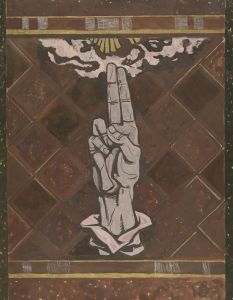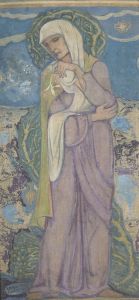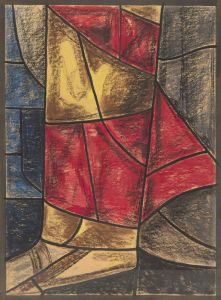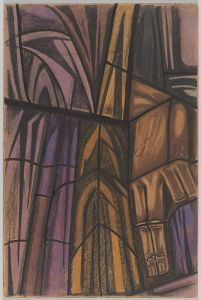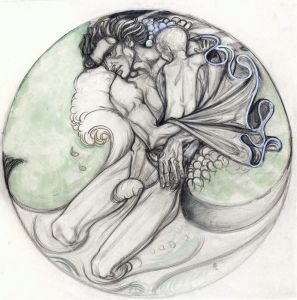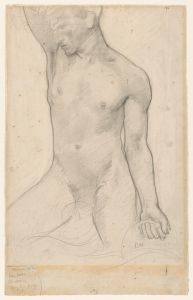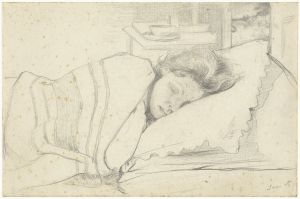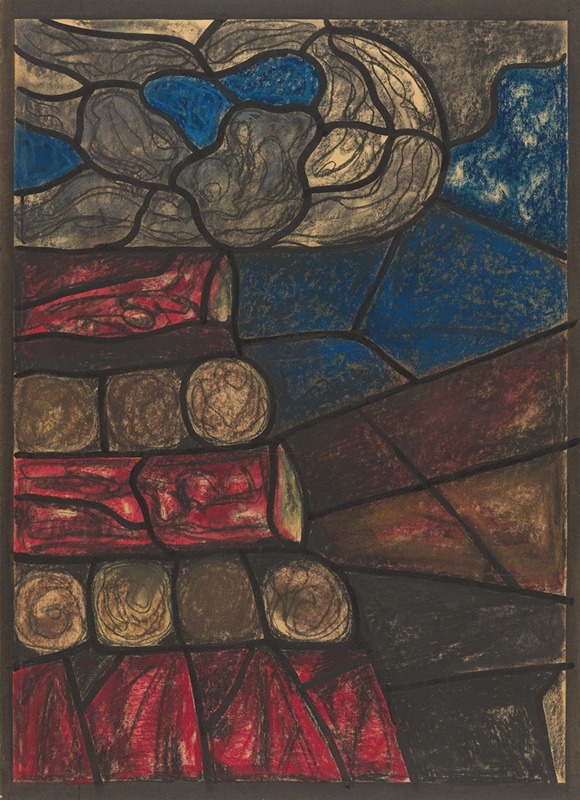
Ontwerp voor raam in het Noordertransept in de Dom te Utrecht 50
A hand-painted replica of Richard Nicolaüs Roland Holst’s masterpiece Ontwerp voor raam in het Noordertransept in de Dom te Utrecht 50, meticulously crafted by professional artists to capture the true essence of the original. Each piece is created with museum-quality canvas and rare mineral pigments, carefully painted by experienced artists with delicate brushstrokes and rich, layered colors to perfectly recreate the texture of the original artwork. Unlike machine-printed reproductions, this hand-painted version brings the painting to life, infused with the artist’s emotions and skill in every stroke. Whether for personal collection or home decoration, it instantly elevates the artistic atmosphere of any space.
Richard Nicolaüs Roland Holst was a prominent Dutch artist known for his contributions to the Arts and Crafts movement in the Netherlands. Born in 1868, he became a significant figure in the Dutch art scene, not only as a painter but also as a designer and a teacher. One of his notable works is the "Ontwerp voor raam in het Noordertransept in de Dom te Utrecht 50," which translates to "Design for a Window in the North Transept of the Dom in Utrecht."
This work is a design for a stained glass window intended for the Dom Church, also known as St. Martin's Cathedral, in Utrecht. The Dom Church is a Gothic-style cathedral that has been a central landmark in Utrecht since its construction began in the 13th century. It has a rich history and has undergone various restorations and modifications over the centuries. Stained glass windows have been an integral part of its architectural and artistic heritage, serving both decorative and narrative purposes.
Roland Holst's design reflects the stylistic elements typical of his work, characterized by a blend of traditional craftsmanship and modern aesthetics. His involvement in the Arts and Crafts movement is evident in his emphasis on detailed craftsmanship and the integration of art into everyday life. The movement, which originated in Britain in the late 19th century, sought to revive traditional handicrafts and was a reaction against industrialization and mass production.
The design for the window in the north transept would have been part of a broader effort to enhance the cathedral's interior with artworks that complement its architectural grandeur. Stained glass windows in cathedrals often depict religious scenes, saints, or symbolic motifs, serving both as a source of inspiration for worshippers and as a means of storytelling. While specific details of the imagery in Roland Holst's design for this particular window are not widely documented, his other works often include allegorical and symbolic elements, reflecting his interest in literature, mythology, and spirituality.
Roland Holst was also a respected educator, having taught at the Rijksakademie van Beeldende Kunsten in Amsterdam. His influence extended to a generation of artists who studied under him, and his work in stained glass design is part of his broader legacy in Dutch art. His contributions to public and ecclesiastical art projects helped to shape the visual culture of the Netherlands in the early 20th century.
The Dom Church in Utrecht, with its historical significance and architectural beauty, continues to be a site of interest for both locals and visitors. The integration of artworks like Roland Holst's stained glass designs adds to the cultural and historical richness of the cathedral. While not all of his designs may have been realized or survived to the present day, his impact on Dutch art and his role in the Arts and Crafts movement remain significant.
In summary, Richard Nicolaüs Roland Holst's "Ontwerp voor raam in het Noordertransept in de Dom te Utrecht 50" represents his artistic vision and contribution to ecclesiastical art. His work is a testament to the enduring appeal of stained glass as an art form and its role in enhancing the spiritual and aesthetic experience of sacred spaces.






